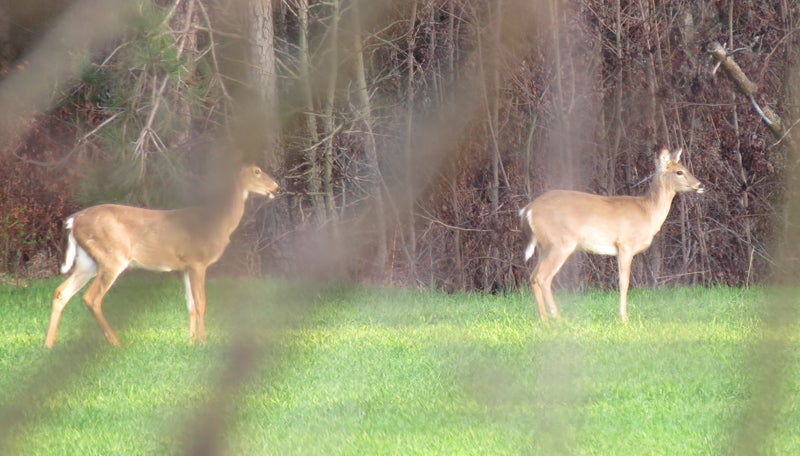Basic Hunting Tactics for Survival
Russ Chastain 03.23.20

If the COVID-19 crisis continues beyond your supply of meat, you might find yourself hunting for survival. If you’ve never hunted before, that idea can be daunting. Fortunately, hunting is a fairly simple activity at its core: You go where animals live and you try to kill one or more. But it can seem complicated sometimes, and different species may require different tactics. The good news is that most game can be hunted very simply with just a few basic tactics.
Sit and Wait
Most hunters of big game these days use the “sit still and wait” method. Simply find an area the target animals like to visit or travel through, and situate yourself somewhere that places you within range of the path or area. Settle in and be still, awaiting your opportunity.
If your quarry has a sensitive sense of smell (deer, hogs, bears, etc), you should be sitting downwind from where you expect it to arrive. Turkeys, squirrels, and most other small game probably won’t smell you, but turkeys have much keener vision and will spot movements more easily. So in those cases concealment is more important than being downwind.
It may take hours or even days for something to show up. As you wait, do your best to keep your movements to a minimum, and move slowly when you do move. Remain vigilant, because wild animals can pass by undetected when you’d think you would have heard them coming a mile away.
As soon as you think something might be coming, start getting ready. Put your hands on your gun or bow, in the correct position to shoot. Get your body and weapon pointed in the direction from which you expect the animal to approach. Shoulder your rifle, shotgun, or crossbow; get ready to draw your bow.
Make all these movements as slowly as possible — but do your best to get most of your moving done before the approaching critter is close enough to really see you well. Don’t fire until you have a good opportunity; then take careful aim and squeeze your trigger or release carefully.
Most game is taken in this way, because it’s usually easier to ambush a wild animal than to sneak up on it.
Stalking
Stalking can be an effective method of hunting, depending on the game. It requires a lot more skill and in many cases has a lower success rate than ambushing your supper, but sometimes it can be more productive.
If you have no idea where the game is likely to be, stalking may be your best bet to actually find some animals. But you must learn to move slowly and remain on high alert, scanning the terrain all around you as you ease along, hopefully silently and definitely slowly.
You can improve your chances during a stalk if you know how to spot and assess “sign,” which means anything indicating that animals have been there: tracks, rub marks on trees, rooted-up areas, scratchings in the leaves, and scat (poop).
It’s reasonable to combine techniques, of course. You might start out stalking, then find a likely-looking area that shows signs of animal use and settle down in hopes of an ambush.
Scent control is important here also. Most of the time, you want to stalk into the wind (wind blowing towards your face). But again, scent doesn’t matter much if at all for turkeys and most small game.
Calling
Game calls can be effective at locating and sometimes luring animals towards your position. Some calls are only useful for location, such as using an owl hooter or coyote call to “shock” a male turkey into gobbling. Other calls are intended to attract animals, such as when you imitate the sounds of a female in hopes of pulling in a lustful male during the breeding season.
Calling is often used in conjunction with the previously-discussed methods. Sometimes it’s effective to stalk or hike, pausing to scan the horizon and/or use locator calls from time to time. Then hunker down once you have seen or heard your game, and switch to calls that attract.
Many animals will approach you without ever making answering calls, so remain vigilant even if you don’t hear any critters replying to your calls.
Squirrels will sometimes show themselves if you imitate the sound of another squirrel barking, or the sound of a squirrel’s teeth cutting open a nut shell; if they hear a squirrel eating they may figure the coast is clear, until you start knocking them out of the trees and into your stew pot.
Conclusion
There’s a lot to learn when it comes to hunting, but every activity requires you to start with the basics and this should help you get started.
Happy hunting.